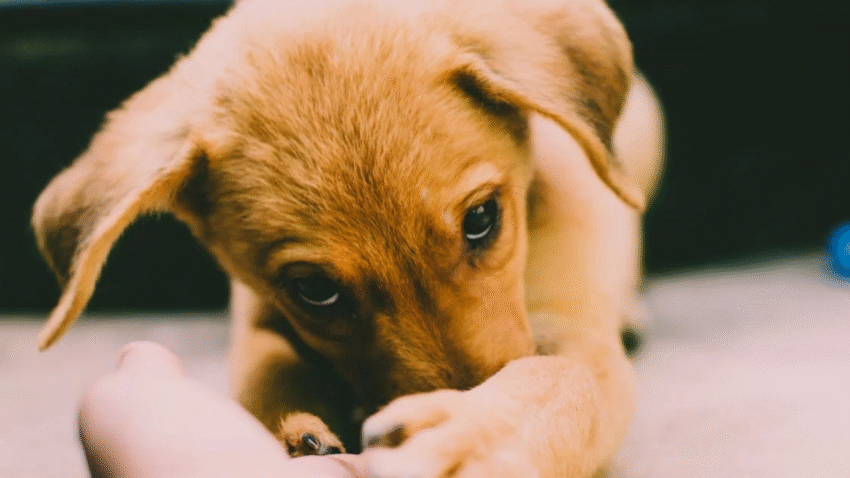Choosing the right toys for your puppy isn’t just about fun—it’s essential for their physical and mental development. In this article, you’ll learn how to choose the best toys for your puppy’s age, breed, and developmental stage. Struggling with a bored or destructive puppy? The right toys can make all the difference.
Why Choosing the Right Toys Matters for Puppies
Puppies are naturally curious and full of energy. They explore the world through play, and the toys you give them can significantly impact their growth. The right toys:
- Stimulate mental development
- Satisfy chewing needs, especially during teething
- Encourage healthy exercise
- Prevent boredom and destructive behavior
- Help with training and bonding
Different types of toys target different needs, so a good toy box should include a variety.
Step-by-Step Guide to Choosing the Right Toys
Step 1: Understand Your Puppy’s Age and Stage
- 8–12 Weeks: Teething stage. Soft rubber chew toys or plush toys are ideal.
- 3–6 Months: Active exploration. Durable toys for chewing and puzzle toys for mental stimulation are great.
- 6–12 Months: High energy phase. Tug toys, interactive toys, and fetch toys help channel energy.
Step 2: Match Toys to Breed Size and Energy Level
- Small Breeds (e.g., Yorkie, Maltese): Need toys that are lightweight and sized appropriately for small mouths.
- Medium Breeds (e.g., Cocker Spaniel, Beagle): Enjoy a mix of chew toys, tug ropes, and puzzles.
- Large Breeds (e.g., Labrador, German Shepherd): Require extra-durable toys made from thick rubber or reinforced fabric.
High-energy breeds (like Border Collies) may benefit more from mentally stimulating toys, while more relaxed breeds enjoy comforting plush toys.
Step 3: Include Different Toy Categories
Make sure your toy collection includes a few from each of these categories:
- Chew Toys: Help relieve teething pain and keep puppies occupied.
- Interactive Toys: Puzzles or treat-dispensing toys that build focus and reduce boredom.
- Fetch Toys: Balls and frisbees encourage exercise and bonding with you.
- Tug Toys: Great for interactive play and teaching control.
- Comfort Toys: Plush toys that mimic littermates, often with heartbeat or warmth features for anxious puppies.
Step 4: Prioritize Safety and Durability
- Avoid choking hazards: Toys should not be small enough to swallow or have loose parts.
- Check for non-toxic materials: Only use toys made with dog-safe materials.
- Supervise playtime: Especially with new or plush toys that can be torn apart.
- Replace damaged toys immediately: Frayed ropes or punctured rubber can pose risks.
Step 5: Observe Your Puppy’s Play Style
Watch how your puppy interacts with different toys. Do they:
- Shake plush toys?
- Chew persistently?
- Get bored quickly?
- Carry toys around like a security blanket?
Tailor their toy selection to what they enjoy most.
Common Mistakes to Avoid
1. Buying Toys That Are Too Big or Too Small
Toys that are too big are hard for small puppies to grip, while small toys may become choking hazards for larger breeds.
2. Using Old Children’s Toys
Toys made for humans can contain unsafe materials, small parts, or stuffing that isn’t dog-safe.
3. Not Rotating Toys
Keeping the same toys out all the time can make your puppy bored. Rotate them weekly to maintain excitement.
4. Choosing Toys Without a Purpose
Not all toys are created equal. Aim for a balanced mix that supports chewing, problem-solving, physical activity, and comfort.
5. Letting Puppies Play Unsupervised
Even the best toy can become dangerous if chewed apart. Always keep an eye on your pup during play, especially with softer toys.
Extra Tips & Recommendations
Freeze Chew Toys for Teething Relief
Put rubber chew toys in the freezer to help soothe sore gums during teething.
Use Puzzle Toys for Mental Stimulation
Fill a treat-dispensing toy with kibble or peanut butter (xylitol-free!) to keep your pup busy and mentally engaged.
Try DIY Toys in a Pinch
An old towel knotted at both ends can be a great tug toy. Just supervise to ensure your pup doesn’t swallow threads or fabric.
Conclusion
Puppy toys are more than just fun—they’re key tools in your dog’s early development. Choose toys based on your puppy’s breed, age, and needs. Rotate regularly, observe how your pup interacts with each one, and keep playtime both safe and enriching. A happy, well-stimulated puppy is easier to train and more enjoyable to raise.
🐾 Stick around for more expert tips on puppy training and care—your best friend deserves the best start!
